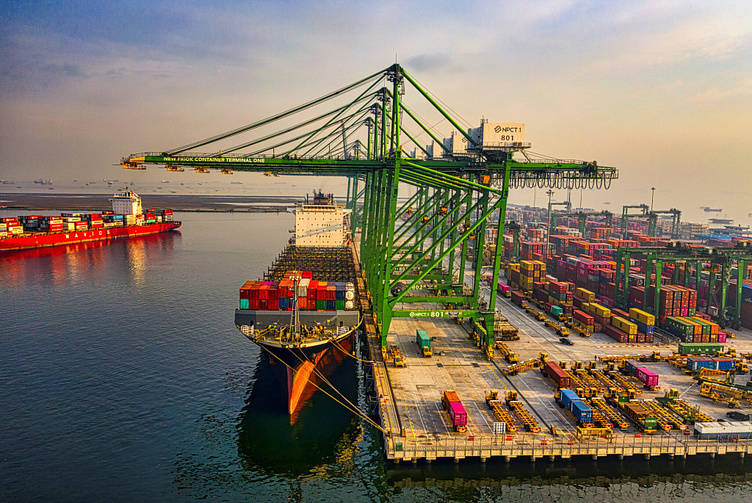How the logistics parks in India are helping independent freight
Over the last few decades, the Indian Government has undertaken numerous initiatives aimed at bolstering the nation’s logistics infrastructure and enabling greater profitability for both multinationals as well as independent freight forwarders. According to estimates, approximately 14 percent of India’s GDP is allocated to the supply chain and logistics sector, a figure nearly double the average logistics cost observed in advanced economies like the US, Japan, South Korea, and Singapore.
Nevertheless, India’s logistics costs remain higher even when compared to other BRICS countries, which has a detrimental impact on the global competitiveness of Indian products. In the latest Logistics Performance Index by the World Bank, India is ranked 44th out of 163 countries. Notably, timeliness and infrastructure have emerged as the primary factors contributing to elevated logistics costs, ultimately reducing the country’s market competitiveness.
Independent freight forwarders
To address these challenges, the establishment of Grade A warehousing infrastructure, acting as logistics nodes, can significantly enhance the smooth flow of products. Additionally, facilitating seamless freight transfer between road transport and other freight modes could effectively lower logistics expenses in the country.
The government’s commitment to the development of Multi-Modal Logistics Parks (MMLPs) shows promising potential to mitigate logistics costs and minimize transportation delays. By adopting this approach, India aims to transform its logistics from point-to-point movement to a more efficient and interconnected hub-and-spoke model, thus enhancing the competitiveness of its products in the global market.
Advantages of the multimodal logistics parks for independent freight forwarders in India
About the Multimodal Logistics Parks in India
The Multi-Modal Logistics Parks (MMLPs) program is a government initiative aimed at establishing logistics parks in various supply chain hubs across the nation. The responsibility for this project lies with the National Highways Authority of India (NHAI) and National Highways Logistics Management Limited. MMLPs represent an upgraded version of conventional logistics parks, offering a diverse range of value-added services in addition to facilitating rail and road transportation. In the current global context, supply management, known by various names worldwide, has gained widespread recognition. However, India has not previously implemented a comprehensive strategy for creating logistics parks.
The primary objectives of MMLPs include consolidating and distributing freight efficiently while ensuring seamless intermodal freight transportation. Users of these parks will also have access to a wide array of value-added services, such as custom clearances, IT support, and storage and warehousing solutions.
How the MMLPs in India will help the transportation and logistics sector
The MMLP is designed to integrate various modes of freight transportation, including highways, railroads, and inland waterways, following a “Hub and Spoke” paradigm. This network will connect different locations through intermediary hubs, aiming to significantly improve the operations of the independent freight forwarders.
The impact of MMLPs on the freight forwarding sector is expected to be highly positive, encompassing several advantages. These include less traffic issues, reduced warehousing expenses, and pollution, enhanced tracking and traceability of transit shipments, and a reduction in net expenses. However, achieving these benefits is only possible through interventions in infrastructure, procedures, and information technology.
In addition to these advantages, the MMLPs offer a comprehensive range of auxiliary services such as storage, warehousing options, value-added services like custom clearances, and IT support. These parks act as a one-stop solution for all cargo-related services, covering warehousing, customs clearance, truck parking, and more.
The Multi-Modal Logistic Park project is geared towards constructing state-of-the-art large-scale warehouse facilities catering to various types of commodities. These parks will be equipped with all necessary amenities, including warehouses, rail sidings, cold storage, customs clearing houses, yard space, workshops, gas stations, offices, boarding houses, eateries, and even water treatment facilities. Overall, the MMLPs aim to revolutionize freight logistics and bolster the efficiency of cargo movement in the country.
The Multimodal Logistics Parks in India are all set to revolutionize the warehousing sector
MMLPs have the potential to revolutionize warehousing in India by addressing existing challenges. This is one factor that will be of immense help to the independent freight forwarders. The primary goal of MMLPs is to consolidate fragmented warehousing in the country, harnessing the benefits of scale and attracting private investments. By enabling zoning and relaxing floor space index requirements, these parks can exponentially increase warehousing capacity, utilizing multi-level storage facilities.
Other value added services
In addition to optimizing inventory planning and shortening supply chains through cross-docking and consolidation services, MMLPs offer co-location of value-added services for the independent freight forwarders. By integrating warehousing, freight aggregation, customs clearance, sorting, weighing, packaging, and transportation, in one place, secondary freight movement costs can be significantly reduced.
Moreover, MMLPs can be designed to include specialized storage facilities like cold storage and hazardous chemical storage, catering to specific industry needs. Standardization and uniformity in warehousing services can be achieved through these parks, which is challenging in the current fragmented and unorganized warehousing ecosystem. Overall, MMLPs have the potential to transform the warehousing landscape in India, making logistics operations more efficient, cost-effective, and commercially viable while fostering collaboration among various stakeholders in the industry.

